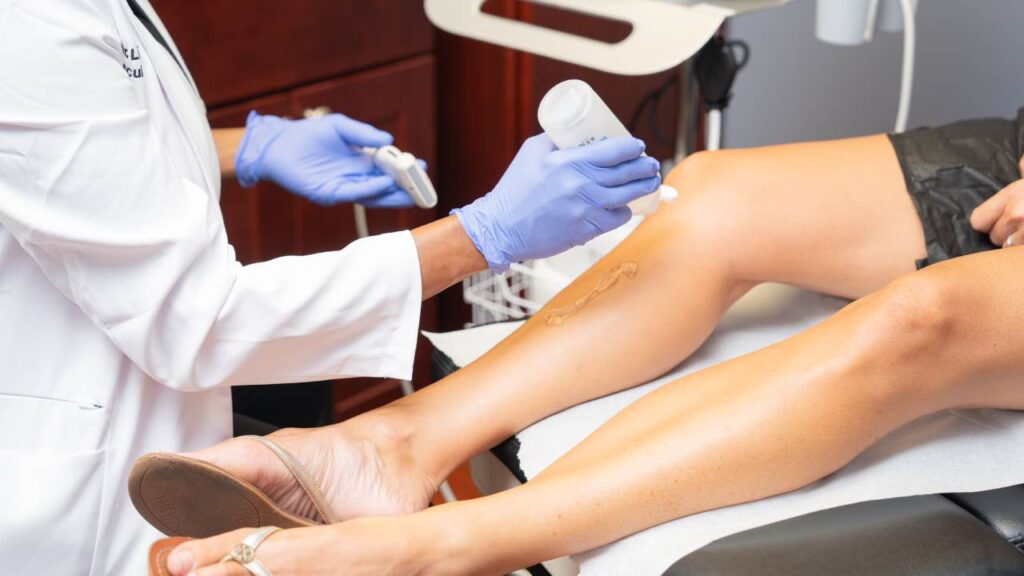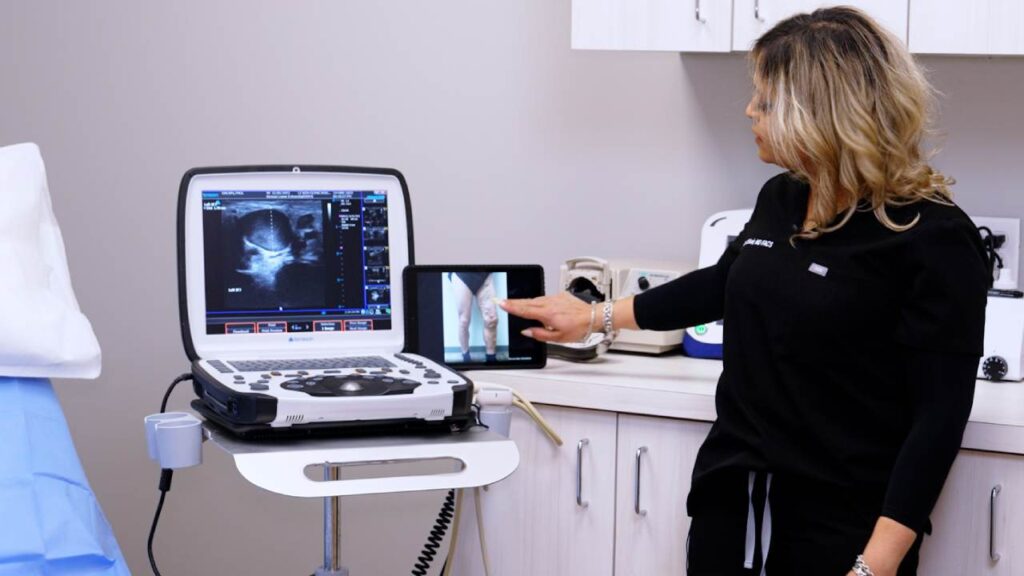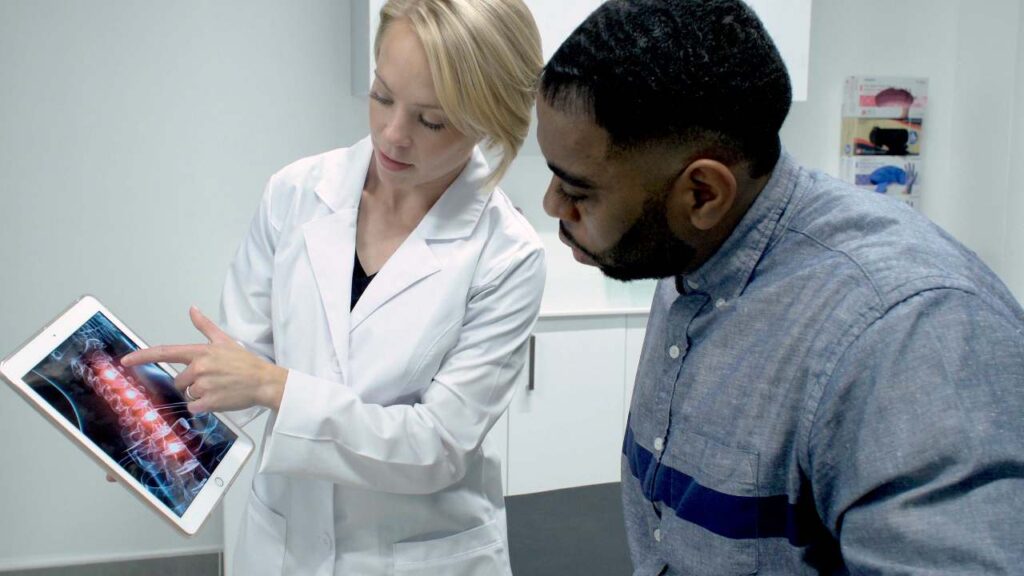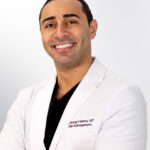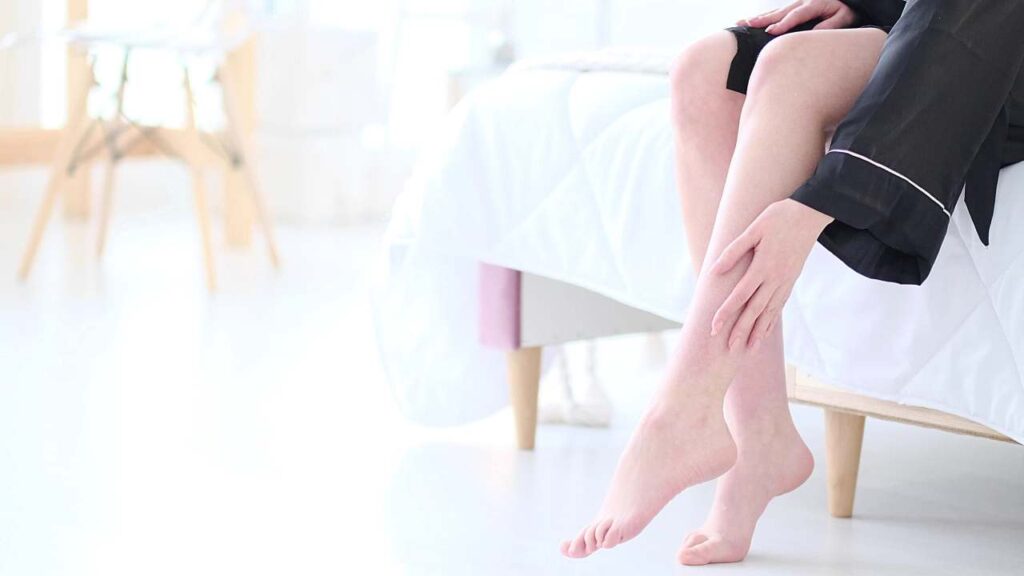What Causes Spider Veins?
Spider veins are small, damaged, blood vessels that appear on the surface of the skin. They’re a dense cluster of veins and their formation resembles that of spider webs or the branches of trees. They’re generally blue, purple, or red.
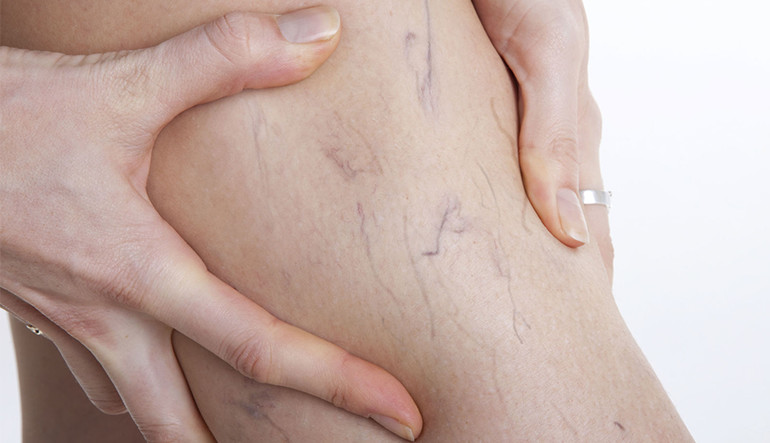
There’s a false assumption that spider veins are completely harmless and that they only look ugly. Yes, it’s true that spider veins do look ugly and people with spider veins often report that they lead to self-consciousness and social anxiety. And yes, spider veins aren’t painful in and of themselves. But spider veins are often caused by underlying vein disease — and that makes them extremely dangerous, if left undiagnosed.
In this article, we discuss what causes spider veins, what are the risk factors of spider veins, and how to get rid of spider veins.
Root Cause of Spider Veins
Chronic venous insufficiency is the root cause of spider veins — the condition that leads to the formation of the web of damaged blood vessels on the surface of your skin.
Venous insufficiency is a circulatory disorder in which the vein valves — responsible for smooth blood circulation to the heart — collapse. These vein valves act like one-way doors to facilitate blood circulation to the heart and prevent gravity from pushing it back down. When these vein valves collapse, blood flows backwards and pools in the leg veins.
Over time, the accumulation of blood in the leg veins leads to increased pressure on the vein wall, which leads to vein dilation and the formation of spider veins and varicose veins on the surface of the skin.
Venous insufficiency is a particularly dangerous disease because its initial signs and symptoms resemble signs of aging, which makes people less likely to contact a vein doctor. Initial vein disease symptoms include leg heaviness, restless legs syndrome, frequent leg cramps, throbbing veins, tingling sensation in the leg veins, and other such issues.
Over time, however, the symptoms of vein disease worsen. If you don’t treat vein disease promptly, you’ll eventually suffer from bulging varicose veins, the possibility of profuse bleeding, swollen ankles and feet, skin disease, skin discoloration, leg ulcers, and deep vein thrombosis.
Risk Factors of Spider Veins
The following are some of the primary risk factors of spider veins and vein disease.
- Genes: If you have a family history of vein disease, you have a 90% risk of spider veins.
- Biological Sex: Women are more likely to get spider veins than men.
- Pregnancy: The weight of the fetus on the leg veins, the increased volume of blood in the body, and the increase in hormones increase the risk of spider veins.
- Age: Vein valves weaken over time, thereby increasing the risk of spider veins.
- Obesity: Extra body weight can increase pressure on the leg veins and cause spider veins.
- Sedentary Lifestyle: If you sit or stand still for long periods of time, you’re more likely to suffer from spider veins.
- Medical History: If you have a medical history of blood clots in your veins or spider veins, you’re more likely to suffer from vein disease.
How to Get Rid of Spider Veins?
There are a lot of ways to treat spider veins. Some of them are effective, some are completely useless, some are moderately effective, and some only temporarily so. The following are some of the different spider vein removal methods.
Conservative Spider Vein Treatment (Only Provides Temporary Relief)
Conservative spider vein treatment refers to things you can do to temporarily improve your condition. These methods provide temporary relief from spider veins by increasing blood circulation. They don’t treat spider veins or the underlying vein disease.
The following methods help you increase blood circulation to the heart:
- Wear compression stockings that apply pressure on your leg veins and facilitate blood circulation.
- Engage in exercises that work your calf muscles like running, yoga, and swimming — they’ll help your calf muscles push the accumulated blood towards the heart.
- Elevate your legs while sitting to facilitate blood circulation to the heart.
Sclerotherapy: Minimally Invasive Spider Vein Treatment (Best Treatment)
Sclerotherapy is the best minimally invasive spider vein treatment available. During the procedure, the vein doctor will inject a solution called sclerosant into your spider veins. This medicine will react with your spider veins and fuse their walls, essentially turning them into scar tissues. The accumulated blood will reroute to healthier veins and the hardened scar tissues will eventually get absorbed by the body.
Sclerotherapy is a minimally-invasive and non-surgical procedure that concludes within 30 minutes with no downtime. You’ll see results within three weeks.
Blue Light Therapy: Spider Veins on Cheeks Treatment (Largely Ineffective)
Blue light therapy is largely ineffective but it’s used as a spider veins on cheeks treatment. This procedure involves the application of laser light over the spider veins to gradually break them down and make them disappear. It takes several repeated sessions before you see any results, which also makes it extremely expensive. However, this procedure is used as a spider veins on cheeks treatment because that area isn’t suitable for sclerotherapy and other effective treatments. Your cheeks are heavy with venous-arterial connections so the vein doctor can’t risk injecting sclerosant into the arteries.
Minimally Invasive Treatment for Underlying Vein Disease (Highly Effective)
As mentioned earlier, spider veins often occur because of underlying vein disease. If you have venous insufficiency, you need to treat that before sclerotherapy. The best minimally invasive procedures for vein disease include radiofrequency ablation, venaseal, and endovenous laser ablation. These procedures close down the affected saphenous vein and restore blood circulation to the heart. They’re extremely effective and non-surgical procedures with a negligible risk of side effects and they conclude within an hour in the doctor’s office.
Consult a Vein Doctor Today
Now that you understand what causes spider veins and the need for immediate treatment, you must be wondering where you can find the best vein doctor. VIP Medical Group is a collective of some of the most qualified board-certified vein doctors in the country who can diagnose the root cause of spider veins and treat it accordingly. For more information, please consult a vein doctor today.

